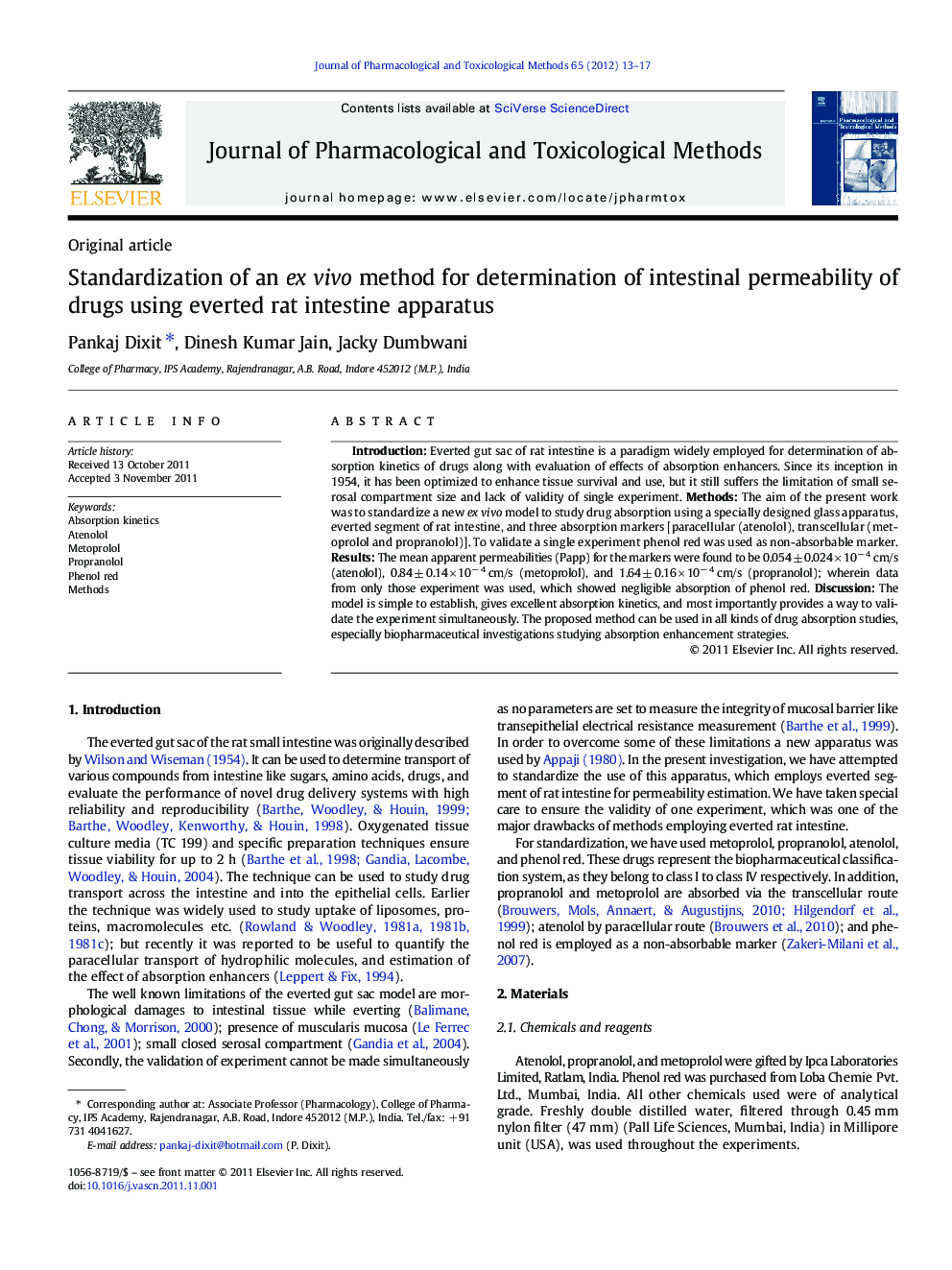| Article ID | Journal | Published Year | Pages | File Type |
|---|---|---|---|---|
| 2549657 | Journal of Pharmacological and Toxicological Methods | 2012 | 5 Pages |
IntroductionEverted gut sac of rat intestine is a paradigm widely employed for determination of absorption kinetics of drugs along with evaluation of effects of absorption enhancers. Since its inception in 1954, it has been optimized to enhance tissue survival and use, but it still suffers the limitation of small serosal compartment size and lack of validity of single experiment.MethodsThe aim of the present work was to standardize a new ex vivo model to study drug absorption using a specially designed glass apparatus, everted segment of rat intestine, and three absorption markers [paracellular (atenolol), transcellular (metoprolol and propranolol)]. To validate a single experiment phenol red was used as non-absorbable marker.ResultsThe mean apparent permeabilities (Papp) for the markers were found to be 0.054 ± 0.024 × 10− 4 cm/s (atenolol), 0.84 ± 0.14 × 10− 4 cm/s (metoprolol), and 1.64 ± 0.16 × 10− 4 cm/s (propranolol); wherein data from only those experiment was used, which showed negligible absorption of phenol red.DiscussionThe model is simple to establish, gives excellent absorption kinetics, and most importantly provides a way to validate the experiment simultaneously. The proposed method can be used in all kinds of drug absorption studies, especially biopharmaceutical investigations studying absorption enhancement strategies.
